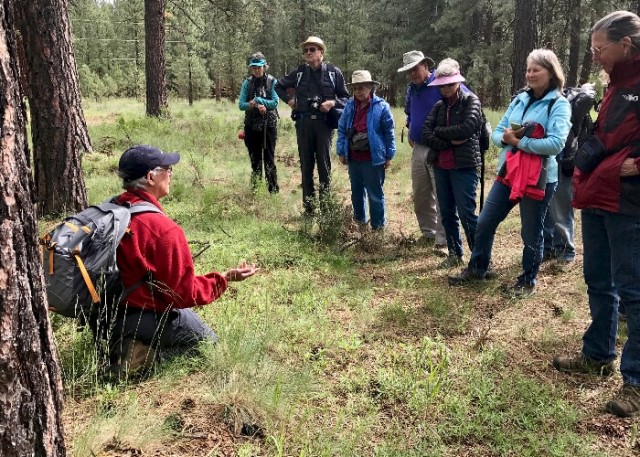Literary roots run deep in Louisiana
Published 12:00 am Sunday, April 19, 2015

- Sara Essex Bradley / New York Times News ServiceThe Upper Pontalba building in New Orleans is the site of a yearly “Stella!” and “Stanley!” shouting contest in honor of “A Streetcar Named Desire.”
A few months ago, I pulled off Interstate 10 and stopped at a gas station in LaPlace, Louisiana. As I gazed at the vodka and meat pies for sale inside, I realized that I was home. Or at least some crucial nugget of what I call “me” was home. Although I haven’t lived in south Louisiana for going on seven years, the time I put in there, soaking up the land and seascape and sky, and, most of all, the spiritual yearning that exists cheek-by-jowl with drive-through daiquiri shops, poverty and Mardi Gras, changed my perceptions profoundly. Louisiana — south Louisiana, in particular — might as well be its own separate country, a place where the residents just happen to speak American English, except when they’re speaking Cajun French or Yat or some other regional dialect.
All of which adds up to a place that produces writers the way France produces cheese — prodigiously, and with world-class excellence — a place that calls on its writers’ talent and inspiration and, in turn, is reflected into the world through their words. And though the list of Louisiana writers — both homegrown and those drawn to the place as if by seismic forces — seems endless, I wanted to smell and hear and see the places that had left a mark on at least a handful of them.
Trending
I figured I’d start at literary ground zero — in this case, the oldest part of the Big Easy, and from there work my way out and around and down the bayou and along the river and over the swamps — the non-New Orleans part of the state that the comic novelist John Kennedy Toole called “the heart of darkness, the true wasteland.” Which, of course, is just one point of view. Another would be from mystery writer James Lee Burke, who wrote: “In the alluvial sweep of the land, I thought I could see the past and the present and the future all at once, as though time were not sequential in nature but took place without a beginning or an end …”
In any case, the mainly 18th-century French Quarter, or Vieux Carré, has been so suffused with literary associations that you can practically hear the echoes of clattering typewriters. When the quarter was hovering just on the genteel side of being a slum — its heyday, actually, in terms of number of writers per square foot — Tennessee Williams, who spent his early childhood in Mississippi before moving to St. Louis and eventually New Orleans, said that it was one of the “last frontiers of Bohemia.”
Today it’s all pricey beignets and knickknacks shops, but back then, just before World War II and into the midcentury, the Quarter was filled with immigrants, streetwalkers, sailors, bars, brawling and rooming houses, such as the one at 722 Toulouse St., where Tennessee Williams’ attic digs became the inspiration, if perhaps not the exact setting, for Stella and Stanley’s dreary flat in “A Streetcar Named Desire.” Today 722 Toulouse is spruced up and operated by the Historic New Orleans Collection, which uses it for its offices.
But bricks and mortar aside, so potent was the vision that created “Streetcar” that every March, below the gallery of what’s known as the Upper Pontalba building on Jackson Square, a crowd gathers for the Tennessee Williams/New Orleans Literary Festival to yell “Stella!” and “Stanley!” in the hopes of winning the Stanley and Stella shouting contest. The four-story red-brick Pontalba buildings (there are two of them, flanking Jackson Square) have long since gone from their original aristocratic glory to seediness and back again. This time around they possess the kind of coveted hipness that characterizes the dwellings of tastemakers in other quarters of urban America, though as with everything in New Orleans, the Pontalbas come with their own distinctive flourish, including elaborate iron scrollwork. Truman Capote, who was born in New Orleans, described the buildings in his short story “Hidden Gardens” as “the oldest, in some ways most somberly elegant, apartment houses in America,” even though they weren’t originally apartment houses in the modern sense at all, but row houses.
Going upriver
New Orleans is much more than its oldest parts, though, and later writers tended to go upriver, to the Johnny-come-lately neighborhoods of the Garden District, the Irish Channel and Carrollton, where even a casual drive-through is guaranteed to elicit an acute attack of real estate envy, especially if you happen to swoon for, say, large, raised center-hall Creole cottages with columns, gabled roofs and gardens spilling over with flowering vines.
Trending
Anne Rice, who was born here, called New Orleans a “strange, decadent city full of antebellum houses,” and whether or not you’re into vampires (I’m not), you might want to do a drive-by to see the author’s most famous residence, an 1857 Greek Revival Italianate mashup in the Garden District at 1239 First St., or to 2524 St. Charles Ave. to see the Marigny, a center-hall Greek Revival home also built in 1857, where the author briefly lived when she was a teenager and which served as the setting for “Violin,” about a ghostly violinist and musical passion.
Kate Chopin, though born in St. Louis, also lived in the hood (and in Cloutierville near Natchitoches), first at 443 Magazine St., described in the 1899 novel “The Awakening” as “… a large, double cottage, with a broad front veranda, whose round, fluted columns supported the sloping roof.” I couldn’t find that particular double cottage, but saw others like it in the vicinity. You can also take in the Chopins’ residence — eventually, Chopin and her husband, Oscar, had six children — at 1413 Louisiana St., a graceful house, shaded by enormous live oaks. On the afternoon I was there, I gazed up, imagining the author writing on the side balcony.
But at the rate I’m going, I’m never going to get as far as the north shore of Lake Ponchartrain, so let’s head over to the Irish Channel, so-called because this sub-sliver of the Garden District, hugging the river south of Magazine Street, was originally settled by Irish immigrants in the 19th century, soon joined by Germans, Italians and people of African ancestry, many of whom worked as stevedores. To this day, the Irish Channel, with its cottages and shotgun homes, is where you’re most likely to hear a Yat accent (as in “Where y’at?”), a New Orleans dialect incorporating Southern American English with Irish, German, Italian and other European speech patterns.
Yat is captured over and over again by New Orleans native John Kennedy Toole’s uncanny ear for mimicry and rhythm in his masterpiece and winner of a posthumous Pulitzer Prize for fiction, “A Confederacy of Dunces,” which revolves around the adventures of the corpulent and sometimes slightly delusional Ignatius J. Reilly: “Santa says he likes the communiss because he’s lonely … If he was to ax me to marry him … I wouldn’t haveta think twice about it.” The author himself lived in a simple, one-story house at 7632 Hampson St., in Uptown-Carrollton, built in the late 19th century and undergoing restoration on the October afternoon I strolled by.
Just a few blocks from Hampson Street, on a quiet block of unassuming houses, is 1820 Milan St., where Walker Percy — who was instrumental in getting “A Confederacy of Dunces” published after its author’s suicide — began writing the 1961 National Book Award-winning “The Moviegoer.” The novel follows its narrator’s spiritual journey in the days leading to his 30th birthday, as he daydreams, meanders and goes to the movies, all in a quest to simply be comfortable as a member of the human race .
Percy — who was born in Alabama but lived in or near New Orleans most of his adult life — felt the city as a kind of fever dream, an atmosphere so redolent, so potent, so dripping in charm and dazzle that it made it difficult for the artist to see past its seductive appearance and get to the messiness of life, which is, after all, the fodder of great literature. In an Esquire essay called “Why I Live Where I Live,” Percy said: “The occupational hazard of the writer in New Orleans is a variety of the French flu, which might also be called the Vieux Carré syndrome. One is apt to … write feuilletons or vignettes or catty romans à clef …” Binx Bolling, the complex, searching, often lonely protagonist of “The Moviegoer,” says that he “can’t stand the old world atmosphere of the French Quarter or the genteel charm of the Garden District” and hence moves to Gentilly, “a middle-class suburb of New Orleans. Except for the banana plants on the patios and the curlicues of iron on the Walgreen drugstore, one would never guess it was a part of New Orleans.”
Flat, hot and wet
Past the seductive beauty of the Big Easy, Louisiana is all about nuance, possibility within the boundaries imposed by climate, landscape and, in many places, poverty. Overall, it is flat, hot and wet. But it is there — in the interstices between the limited real and the spiritual perhaps — that the masterpieces of Louisiana literature unfold. I love these places: small towns, weedy railroad tracks, bridges over bayous leading to wetlands that give way to the oil rig-dotted Gulf of Mexico. There are no signposts, no big photo opportunities. Just a unique and, for me, magical way of being in the world.
Which is not to say that there aren’t go-to sites, too, such as Laura Plantation on the River Road in Vacherie, where, in the 1870s, Alcée Fortier, a folklorist who lived up the road, began to write down the stories that he heard former slaves telling their children in Creole French patois. These tales, of Compair Lapin and Compair Bouki, eventually entered the American canon as Br’er Rabbit, under the authorship of Joel Chandler Harris.
Whether or not you’re a fan of that original “wascally wabbit,” the Creole plantation itself, with its slave cabins, family artifacts and raised Creole family home, surrounded to this day with cane fields, is marvelous.
Now, over the swamps, to the small town of New Iberia, home-base of James Lee Burke’s Cajun detective Dave Robicheaux: crime in and around da bayou. (The author himself, born in Texas and raised on the Texas-Louisiana Gulf Coast, now spends most of his time in Montana.) I have to confess that I’ve long had a special affection for small, pretty New Iberia, with its plantation homes and first-rate Bayou Teche Museum next to the art deco Evangeline Theater. On Main Street you can follow Detective Robicheaux and his buddies to Victor’s Cafeteria and get fried frogs’ legs, gumbo, soft rolls and all kinds of vegetables, or meander over the Teche on Bridge Street, where Dave’s fictional bait shop was located. Not just the town, but all of Iberia Parish is dotted with places from the author’s many novels, but remember to bring soft eyes so you don’t miss the misty blue-greens, the march of live oaks and the wooden houses, some with a quality of wistfulness from having withstood decades, and even centuries, of hurricanes and humidity.
My final stop was also my starting place: Baton Rouge, where Huey Long built the nation’s tallest state capitol building, a 34-story Deco-Moderne skyscraper. Three years later when he was a U.S. senator, he was assassinated outside his offices. Or, as Robert Penn Warren put it in “All the King’s Men”: “We came into the great lobby, under the dome, where there was a blaze of light over the statues which stood in statesmanlike dignity on pedestals to mark the quarters of the place. … I saw the two little spurts of pale-orange flame from the muzzle of the weapon.”
On the Capitol’s observation deck, I looked west over the Mississippi toward the swamps and bayous, north toward great smoking petrochemical plants, east toward the Big Easy and its dreamy charms, and finally, between where I stood on the 27th floor and the Louisiana State University Tiger football stadium, toward the old wooden house where my husband and I raised our children, with its two looming oaks out back and decades of stories.








